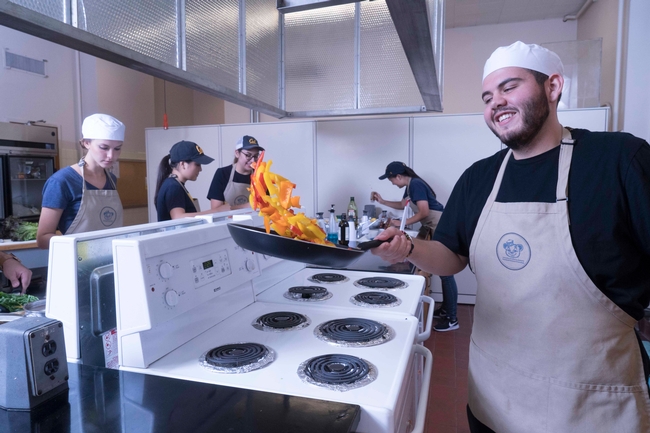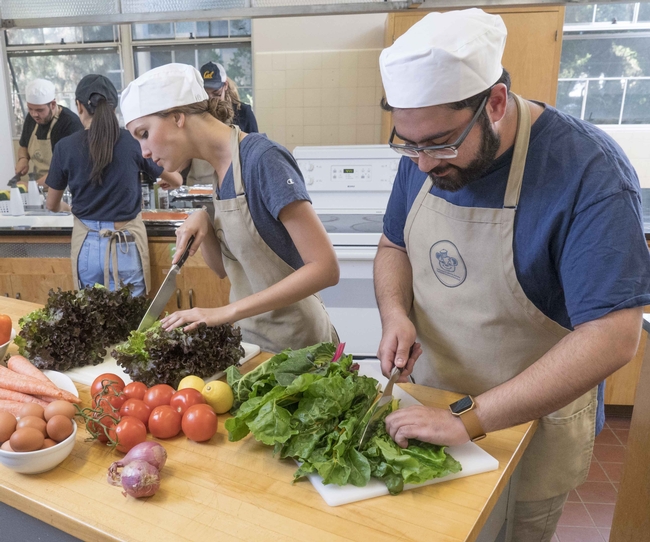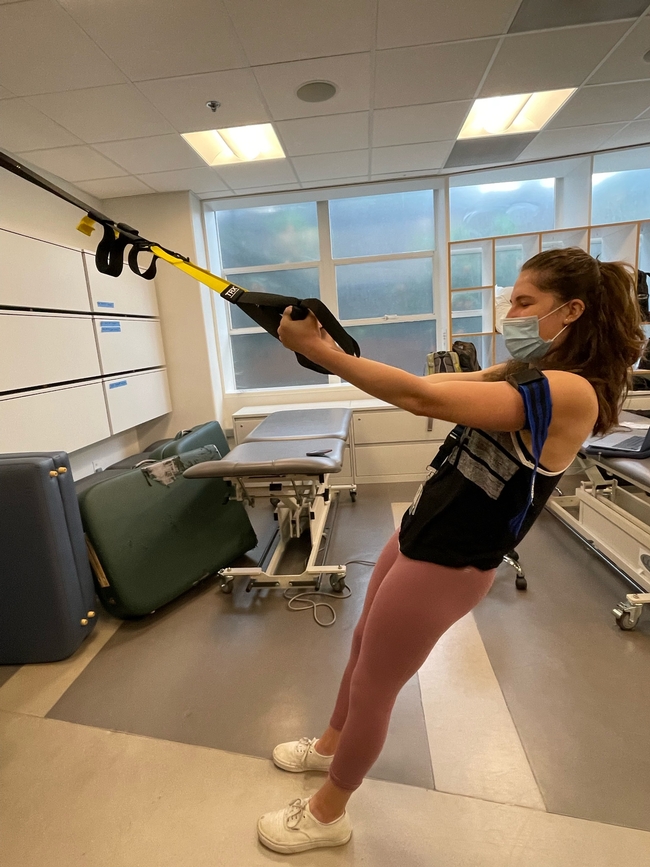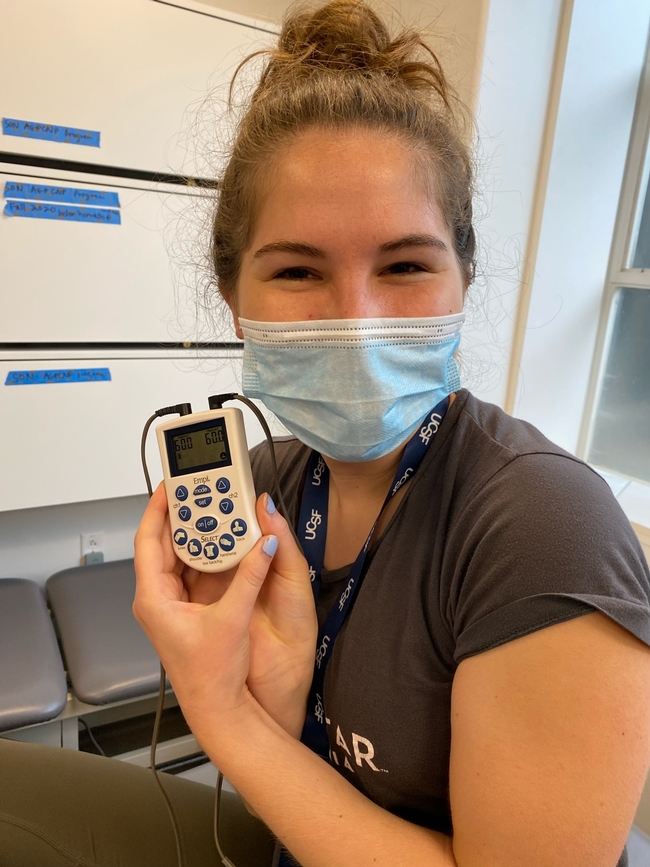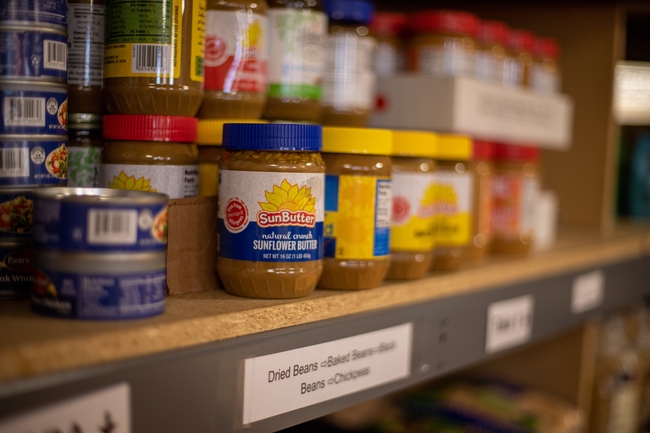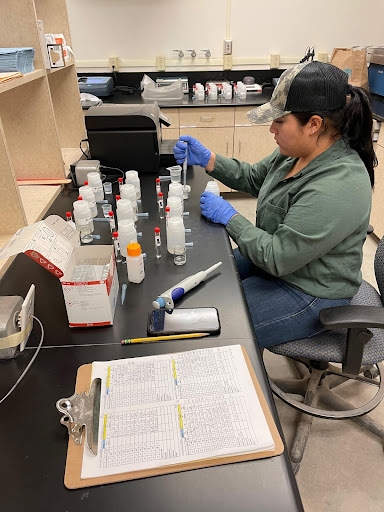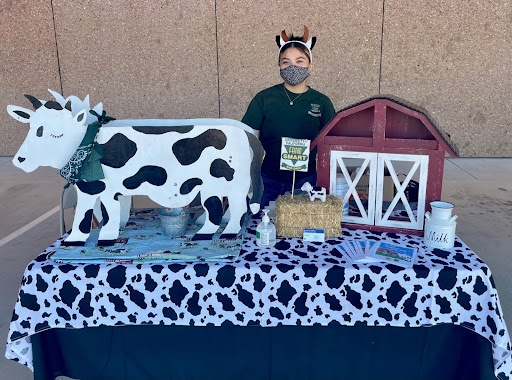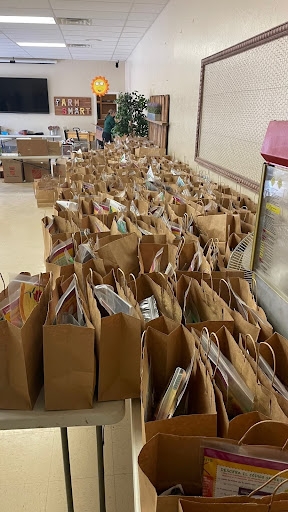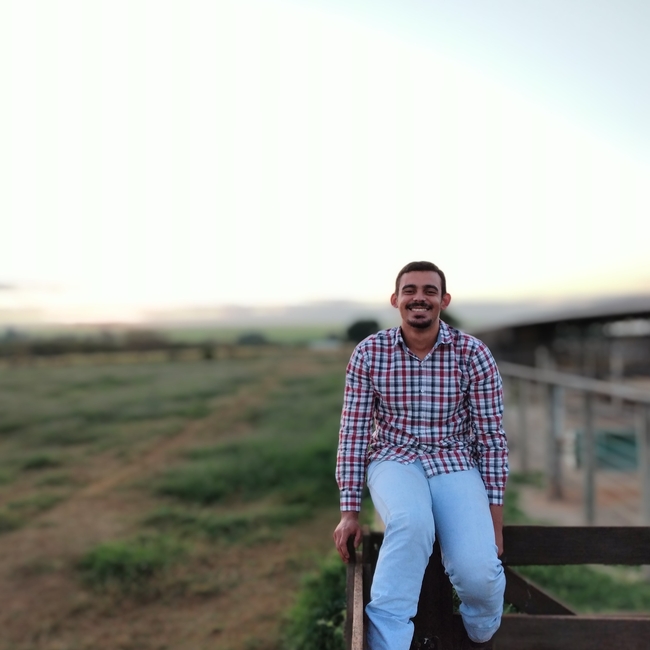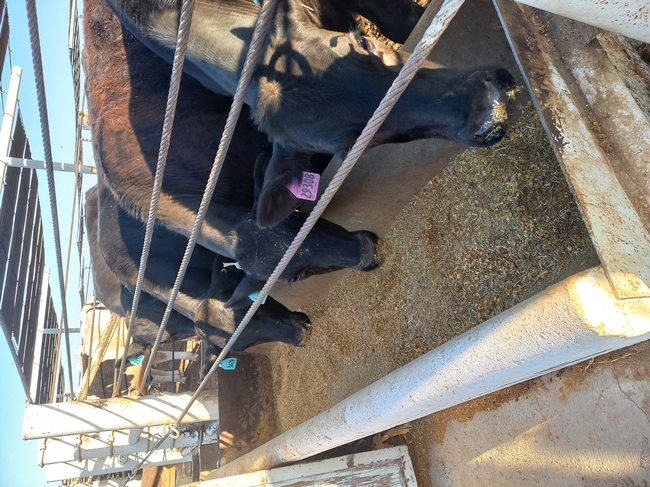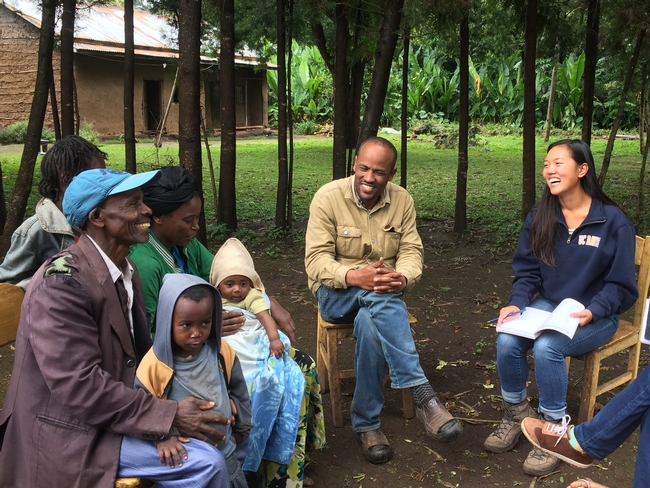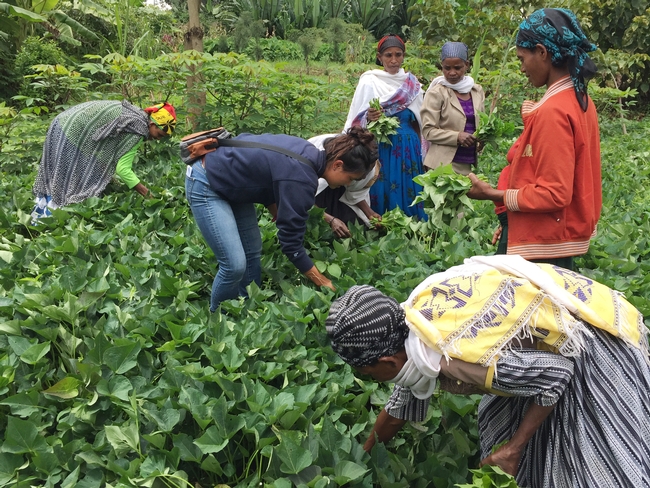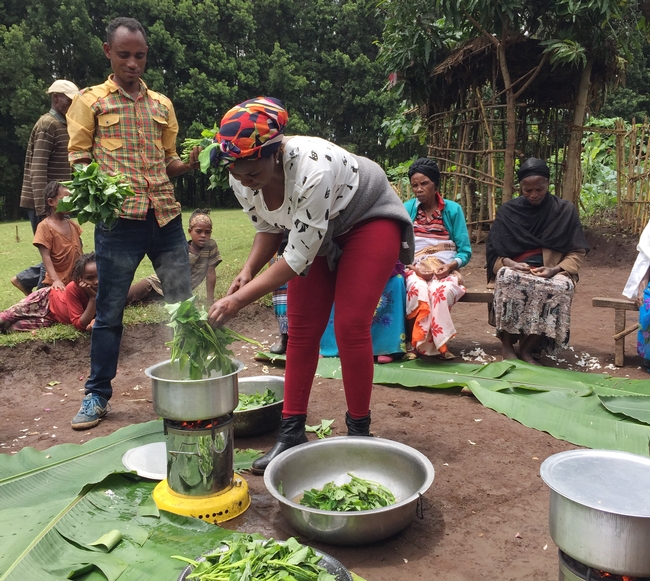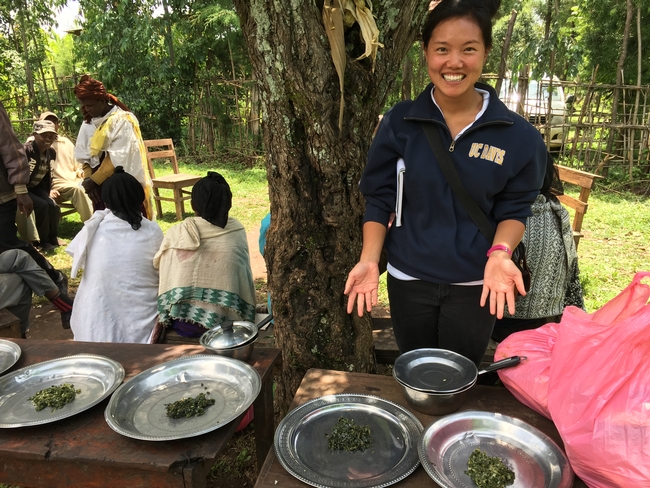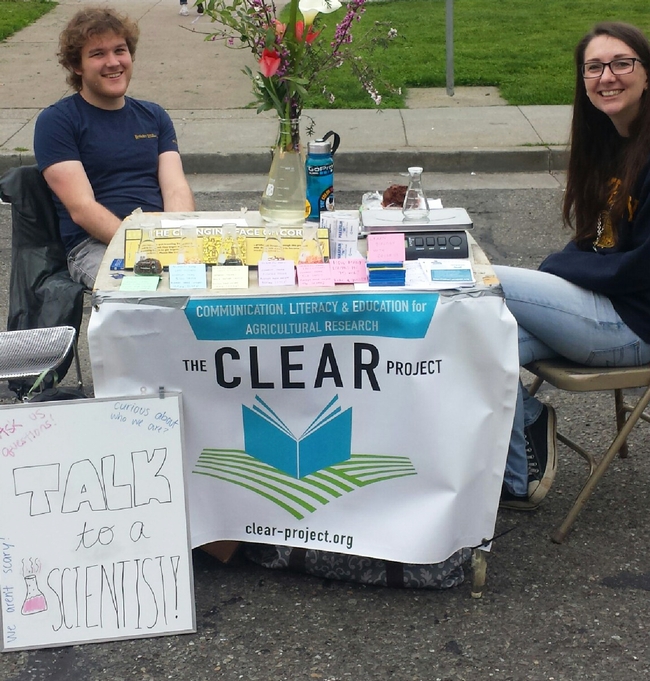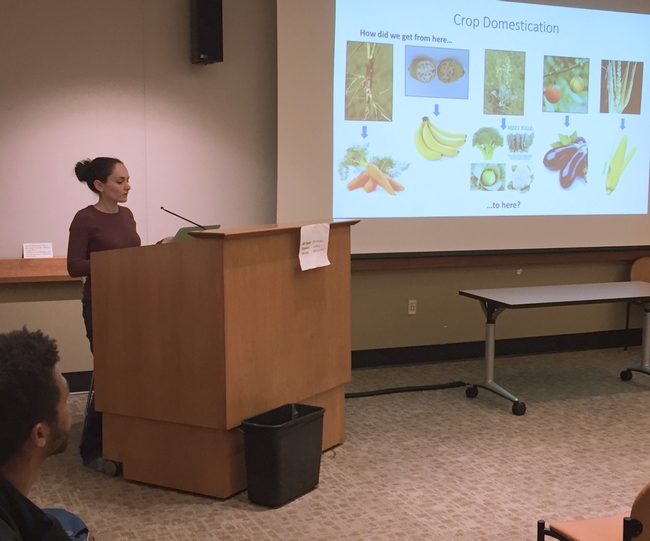Posts Tagged: students
Teaching Kitchen course helps improve college students’ food security
Cooperative Extension researcher: Nutrition course a boon for UC Berkeley students
College students across the nation are struggling to meet their basic food needs. Within the University of California system of 280,000 students, 38% of undergraduate students and 20% of graduate students report food insecurity.
As part of the UC Global Food Initiative, in 2015 the Nutrition Policy Institute (a UC Agriculture and Natural Resources statewide research center) identified student food insecurity as a UC systemwide problem, prompting the UC Regents and campuses to collectively address the issue.
All 10 UC campuses now have on-site basic needs centers, providing food, emergency housing and support services. The UC system and campus working groups recognize that meeting basic needs, such as food, is a multidimensional challenge.
In response to the 2022 White House Conference on Hunger, Nutrition, and Health, which called for national efforts to reduce diet-related disease and food insecurity, UC renewed their commitment to cut the proportion of students facing food insecurity in half by 2030. Campuses will partner with local counties to maximize enrollment in the Supplemental Nutrition Assistance Program (also known as CalFresh in California), provide food for students who do not qualify for CalFresh, and allocate campus food resources to historically underserved student populations.
NPI's collaborative researchers continue to monitor the impact of these efforts, in addition to other interventions, such as supporting students in building basic culinary skills, to improve food security. One multipronged approach to address food insecurity at UC Berkeley is a 14-week course on Personal Food Security and Wellness with a Teaching Kitchen laboratory component.
Sarah Minkow, who teaches the Personal Food Security and Wellness course at UC Berkeley, shared that students learn about nutrition and gain culinary skills through the Cal Teaching Kitchen.
The curriculum is designed with consideration for the time, cost and convenience of healthy eating. Discussions include food safety, calculating nutrient needs, mindful eating and reading nutrition labels. The Teaching Kitchen laboratory brings the lessons to life through knife skills, “no-cook” cooking, microwave cooking and sheet pan meals.
Minkow enthusiastically highlighted her students' “overwhelmingly positive [response to the] lecture and lab,” suggesting the benefits of an interactive learning environment to garner student engagement.
“Students often give feedback that they wish this was a required course for all UC Berkeley students,” said Minkow. She noted one barrier to reaching more students: capacity of the Teaching Kitchen space.
Susana Matias, a Cooperative Extension specialist at the UC Berkeley Department of Nutritional Sciences and Toxicology and collaborative researcher with the NPI, evaluated the impact of the Personal Food Security and Wellness course at UC Berkeley.
Matias reported that increasing food literacy and culinary skills among students has shown to increase intake of fruits and vegetables, and frequency of cooking, and reduce the number of skipped meals. Her study on the impact of the 14-week nutrition course also found a significant decrease in student food insecurity.
Across the UC System, students are benefiting from their campus Teaching Kitchens, including UC Berkeley, UC Davis, UCLA and UC Riverside. Other campuses such as UC San Diego, UC San Francisco, UC Santa Cruz and UC Santa Barbara offer basic student cooking classes as well.
Katherine Lanca, UC Global Food Initiative fellow working with NPI, attended the 2022 Teaching Kitchen Research Conference as part of her fellowship to learn about the latest research on teaching kitchens supporting equitable health outcomes.
The conference was hosted at UCLA by Harvard T.H. Chan School of Public Health Department of Nutrition in association with the Teaching Kitchen Collaborative. Teaching kitchens are a promising approach to supporting food security and cultivating lifelong habits, especially among a college student population.
Food pantries, improved CalFresh processes alleviate food insecurity on UC campuses
Nutrition Policy Institute researchers contribute to studies that inform policy changes
Marcela Gonzalez, who had wanted to be a physical therapist since she was a teenager, was in the final stage of realizing her dream.
But when she started in the PT program at the University of California San Francisco in 2021, a vexing struggle of her undergraduate years came back. Academic pressures and stomach troubles, compounded by financial worries, drained her of any energy and capacity to feed herself.
“I didn't eat; I lost a lot of weight because I just couldn't eat,” Gonzalez recalled. “I was too stressed out all the time; I was a mess.”
During her first year at UCSF, Gonzalez, for whom food has “always just been hard,” discovered that she qualified for CalFresh (California's version of the Supplemental Nutrition Assistance Program, formerly known as “food stamps”). Her participation in the program – as well as the presence of a campus food pantry – helped lift a heavy mental burden and allowed her to refocus on school.
To understand the mechanisms that connect eligible students with CalFresh benefits, which could greatly improve their lives and education, University of California researchers interviewed UC campus staff responsible for guiding undergraduate and graduate students through the application process. Their recently published study, which involved researchers at UC Agriculture and Natural Resources' Nutrition Policy Institute, illuminated several major facilitators and barriers to CalFresh enrollment.
Campus-county coordination, boosting staffing key factors
Ensuring that college students have access to CalFresh is especially crucial, given that food insecurity affects that segment of the population roughly four times the rate of the general population, according to the study's principal investigator and co-author Suzanna Martinez, an associate professor in the department of epidemiology and biostatistics at UCSF.
It's estimated that more than 40% of college students face uncertain access to healthy food – and inflation, the rising cost of attending college and increasingly unaffordable housing are likely to swell those numbers.
That's why researchers say it's critical for campus staff who work on CalFresh outreach to collaborate with the financial aid office and the county office that administers the CalFresh program locally. Through close coordination, staff members can determine if students meet the necessary exemptions and help them with the paperwork.
“When that happens, it's much easier than when a student applies without their campus Basic Needs coordinator, or when they just go to the county and apply on their own,” Martinez explained. “Maybe they don't know all of the verification documents that have to be included, or they might not know their financial aid status.”
Erin Esaryk, NPI research data analyst and first author of the study published in the Journal of Nutrition Education and Behavior, also highlighted the need for increased campus staffing to help with CalFresh enrollment, as well as more outreach by campus and county staff to student populations about the benefits.
“When there's a lot of outreach, that helps alleviate some of the stigma, to normalize the receiving of CalFresh,” Esaryk said.
Helping others worry less about food
Given her own history of travails, Gonzalez, the physical therapy student, wanted to help others at UCSF “de-stress” about food. In summer and fall 2021, she served as a “CalFresh ambassador” for her cohort of new PT students, developing presentations and guides that break down how to apply for or renew CalFresh benefits.
She became the go-to person for her classmates' questions on the logistics and details of applying for the program, and also encouraged fellow health-professional students who, like herself, did not think they would qualify.
“To take out less loans, or to not worry about food a little bit every week, is a great thing,” said Gonzalez, pointing out that subtracting food costs allows students to shave down their loans.
After helping introduce her classmates to CalFresh, she transitioned to working at the food pantry at the Parnassus campus. In addition to setting up and distributing the items, Gonzalez also posts on Instagram and TikTok (@ucsf_basicneeds) to promote the “food market,” which attracts about 100 students and campus community members every Thursday afternoon.
“You never know what you're going to get, but there's so much really good, fresh produce,” she said.
Campus food pantries deliver health benefits
Researchers are also studying how campus food pantries affect students' overall health, including easing the challenges of anxiety, depression and sleep deprivation. Another recent study published in the Journal of Nutrition Education and Behavior analyzed health-survey responses of 1,855 undergraduate and graduate students at all 10 UC campuses – before and after access to a campus food pantry.
“What we found was that students reported improvements in their perceived health and sufficient sleep,” said UCSF's Martinez, the lead author. “We also found that they reported fewer depressive symptoms, compared to before having access to the food pantry.”
By 2019, all UC campuses had established food pantries, although nationwide only about 25% of four-year colleges have one. The significant health benefits reported by UC students in this study give researchers hope that campus food pantries will see additional governmental support, in California and beyond.
“It was important to evaluate whether the food pantries were actually making a difference…if you don't have numbers or evidence, then you're not going to get funded to support future programming,” Martinez said.
Research guides state policy changes
Studies of food insecurity in the college setting have already informed policymaking aimed at smoothing the application process for CalFresh – benefits regarded by Martinez as a better long-term solution than food pantries, which constitute an emergency “short-term response” to the problem.
One example of the research's impact is a law passed last year in California that requires community colleges and California State University campuses to designate a campus-county liaison who would help students procure social services, including CalFresh. A separate law expanded the list of training programs within which students would potentially qualify for CalFresh, and another bill currently under consideration by the state Legislature would make the processing of students' CalFresh applications more consistent from county to county, through more standardized training of staff.
Meanwhile, on the research front, Esaryk, Martinez and their colleagues are completing a follow-up study on students and CalFresh enrollment, this time looking at the perspectives of county staff. And while their broader goal remains clarifying and streamlining student eligibility rules and processes at all levels, they remain focused on students and meeting their needs.
“Right now, our main mission is just to try to increase awareness of CalFresh for students and to let them know they may be eligible,” Martinez said, “and then assist them through that application process so they can actually get the benefits.”
In addition to Esaryk and Martinez, NPI director Lorrene Ritchie and Laurel Moffat of Washington State University are also authors of the CalFresh/SNAP benefits study, while co-authors of the college food pantry study are Ritchie, Gwen Chodur of UC Davis, Sevan Kaladijian of UC Irvine and Michael Grandner of the University of Arizona.
Desert Research and Extension Center hosts international agriculture student interns
Caring for feedlot cattle, examining onion irrigation practices, and teaching preschoolers about agriculture are not part of the typical college curriculum. But for Desert Research and Extension Center's five college student interns, these activities are what fill their days.
Located on 255 acres of Southern California desert, DREC focuses on advancing irrigated desert agriculture, livestock and feedlot management, and pest management. It is also home to the Farm Smart agricultural education program, reaching approximately 7,800 participants annually.
In February, DREC welcomed the college student interns - creative thinkers working at the intersection of experimental research and agriculture education. During the internship, the students are working on-site under the mentorship of academics and staff members on applied projects. After years of COVID restrictions, the center is excited to welcome the students in person for hands-on engagement with the research and the public.
"Hosting students at DREC helps us to fulfill our mission while training the next generation of professionals," says Jairo Diaz, Director of DREC. "I am particularly motivated to provide experiential learning activities to underrepresented groups in agriculture and STEM careers."
Read on to learn about each of these budding agronomists.
Dianely Alba
Dianely Alba is majoring in agronomy at the Universidad Autonoma de Baja California, Mexico (This university is about 20 miles south of DREC). She is working under the mentorship of Jairo Diaz-Ramirez on a project focused on improving irrigation and nutrient management practices in onion production in Imperial County.
Melina Munoz
Melina Munoz is a student at Imperial Valley College studying elementary education. She is an intern for DREC's Farm to Preschool Festival. Munoz is in charge of developing and translating activities, planning and implementing the festival, and data entry for participant registration and evaluation information.
Lester Nolasco
Lester Nolasco grew up on a farm in Honduras, so he has been involved with animals and agriculture from a young age. He is working under the mentorship of Pedro Carvalho, the Feedlot Management Specialist. Nolasco is currently working on feedlot cattle management and beef cattle nutrition.
“Although my passion is cattle, when you work with these animals, you indirectly learn about agriculture and crops in general because that is also an important part of cattle nutrition,”says Nolasco. Alongside the other feedlot management interns, Nolasco feeds animals, cleans pens, mixes feed, weighs cattle, and does lab work. “It is such a nice experience for me because I had only worked with dairy cattle in the past and this internship is teaching me a lot. I would like to learn as much as I can about beef cattle nutrition. Hopefully, in the future, I will be a professor and share the knowledge I have learned with other professionals back in my country.”
Heitor Otávio Martins de Oliveira
Heitor Otávio Martins de Oliveira has worked with animals throughout his life, starting with his parents' farm. He attended veterinary school, where he continued to learn about agriculture. At DREC, Otávio Martins de Oliveira is working on beef cattle nutrition management. In addition to daily maintenance tasks, he weighs the cattle monthly and provides any necessary treatments.
“I would like to get as much knowledge as I can about nutrition in the USA and then return to my home country of Brazil to work there,” says Otávio Martins de Oliveira. “Maybe I will get a master's degree related to reproduction in cattle.”
Willi Meireles
Willi Meireles was introduced to Carvalho by his professor in Brazil. He is working on evaluating the use of feed additives to increase the performance of feedlot cattle.
“My grandparents own a farm where beef cattle are raised, so since I was a child, I have worked with animals and always liked animal science,” reflects Meireles. “I intend to specialize in ruminant nutrition and, after working hard, be able to have my own beef cattle.”
Trying leafy greens from a sweet potato plant
This time of year, it can be hard to resist the pull of sweet potatoes — roasted, mashed with butter, and topped with a combination of delectable treats from maple syrup to pecans to marshmallows. But did you know that the green leaves of the sweet potato plant also have the potential to be a tasty, nutritious food?
In Ethiopia, where sweet potatoes can be a staple crop, UC Davis graduate student Lauren Howe recently helped farmers taste test the leaves and consider this familiar crop in a new culinary light.
Watch a video to learn how to prepare sweet potato leaves:
The leaves of this drought-tolerant plant offer farming households there an alternative — and nutritious — food in the lean season, while they are waiting for its starchy, tuberous roots to be ready to eat. Introducing sweet potato leaves as a food option is intended to help farmers better diversify their families' diets, to include a wider variety of vegetables in addition to staple foods, especially during the dry season.
Lauren shared her experiences in Ethiopia on the Agrilinks website, where she recently won the Agrilinks Young Scholars blog contest with her writing and a short video from the field.
Boots on the ground with sweet potato farmers in Ethiopia
Lauren traveled to Ethiopia this summer to work with an organization called Send A Cow Ethiopia (SACE), on a Trellis Fund project. As part of the Horticulture Innovation Lab, each Trellis Fund project connects an organization in a developing country with a grad student from a U.S. university, to work together to benefit local farmers, while building the capacity of both the local organization and the student.
In Ethiopia, SACE helped Lauren better understand local contexts by connecting her with farming households to interview about their current farming practices and the role of sweet potatoes in their diets.
Later they traveled to meet with a group of about 25 farmers in the Ukara community to harvest leaves, cook together and discuss their perceptions of the leaves as a vegetable option.
Reflecting on taste tests, new foods, and rural communities
Lauren's own passion for food and witnessing how food can help build community is an important part of her reflection on this experience:
"This project is about creating tasty dishes to persuade people about the nutritional benefits of a new ingredient. It is gathering families, friends and neighbors to sit down to a communal meal (already a strong Ethiopian practice), breaking bread together, sharing stories, experiences and hopes for the future."
For more, go read the rest of Lauren's blog post and check out her short video too.
Background and related international agricultural research
Lauren's experience with a Trellis Fund project in Ethiopia was supported by the Horticulture Innovation Lab, a research program led by Elizabeth Mitcham of the UC Davis Department of Plant Sciences, with funding from the U.S. Agency for International Development. With a focus on fruit and vegetable innovation, the Horticulture Innovation Lab seeks to empower smallholder farmers in developing countries to earn more income and better nourish their communities — as part of the U.S. government's global Feed the Future initiative.
Past research from the Horticulture Innovation Lab has focused on other leafy greens, specifically African indigenous vegetables, and also on sweet potatoes themselves (orange-fleshed sweet potatoes, that is). Though the program has not done in-depth research on sweet potato leaves for human consumption beyond this small Trellis Fund project, you can find more information about eating sweet potato leaves and tips in this bulletin from the University of Arkansas Cooperative Extension, and a wealth of information about sweet potato farming and gardening from the University of California Vegetable Research and Information Center.
Related Food Blog posts:
- New reason to give thanks for sweet potatoes
How orange-fleshed sweet potatoes are making a difference in some African countries - More African indigenous vegetables on more plates
A brief look at some leafy greens popular in Eastern Africa - Connecting with farmers over pineapple postharvest practices
Another Trellis student experience with a video - ‘Local' farm inspiration from half a world away
A UC Cooperative Extension specialist reflects on his time as a Trellis student
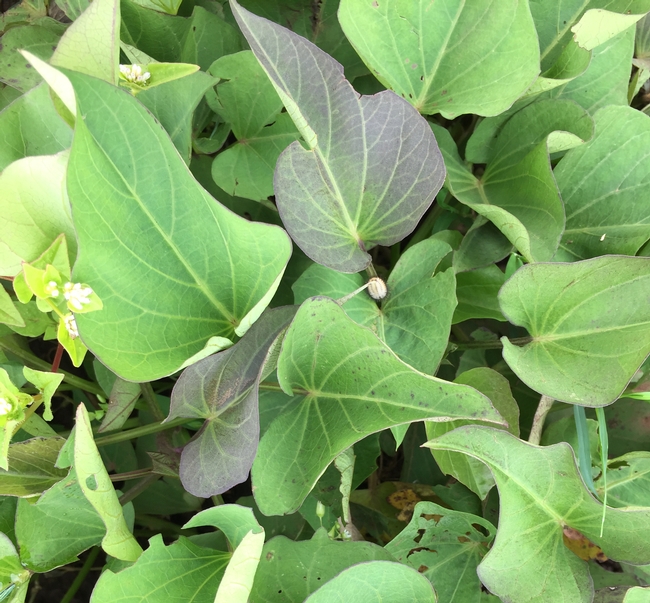
Sweet potato leaves in Ethiopia - Horticulture Innovation Lab photo by Lauren Howe/UC Davis
Scientists-in-training learn to tell a CLEAR story
On the second Saturday of every month, Tuesday Simmons heads to the downtown Berkeley farmers market. Among the produce stalls and coffee stands, she sits behind a table with a sign that reads “Talk to a scientist!” She and other students spend the day fielding questions from strangers about topics that range from genetically modified foods to climate change and more.
“We never know who we'll talk to at our public events, or what kinds of questions we'll be asked,” said Simmons, a graduate student in the UC Berkeley Department of Plant and Microbial Biology (PMB). “This makes the farmers markets fun.”
Simmons' monthly visits to the farmers market are organized by the student group CLEAR (Communication, Literacy, and Education for Agricultural Research). The group aims to mentor the next generation of science communicators by engaging in open, transparent, and active conversations with the public about science and research. Funded through the University of California Global Food Initiative, CLEAR offers a series of scientific outreach events including activities at the farmers market, student-led lectures at libraries, and discussions with the public at local pubs.
The events are aimed at making science accessible.
“For members of the public who think scientists are a group of scary, isolated individuals funded by companies with special interests, these brief exchanges can be enough to make them question that assumption,” said Simmons, who also noted that translating her microbiology research for the public has helped improve her communication skills.
Learning to create compelling and impactful science communications is also a draw for Daniel Westcott, who joined the group in 2015. As a PMB graduate student who studies a specialized field — photosynthetic energy conversion in algae and plants — Westcott noted that discussing his research with non-scientists felt like a challenging hurdle to overcome.
Students like Westcott practice their communications skills through writing for the CLEAR blog. In their monthly blog posts, group members have tackled the economics of the meat industry, and the science behind the Impossible Burger, and the difficulty in labeling foods as “natural,” as well as highlighting CLEAR's ongoing outreach efforts.
Westcott understands that sharing his research with the public through the blog and other CLEAR activities is essential.
“Nearly two million scientific articles are published each year,” Westcott said. “Today's successful scientists must be media savvy in order to rise above the noise.”
Launched in 2015, CLEAR began as a project across three UC campuses — Berkeley, Davis, and San Diego. At Berkeley, co-founders Peggy Lemaux and Dawn Chiniquy, a PMB postdoctoral fellow, saw the funding as an opportunity to focus on outreach activities and mentorship opportunities, such as helping graduate students write for and talk to non-scientific audiences.
Lemaux is a UC Cooperative Extension specialist and PMB faculty member who studies food crop performance and quality. She said CLEAR is a student-driven organization. All members of CLEAR are volunteers, and a mix of undergraduates, graduate students and postdoctoral researchers participate in the group's activities. Many of members are PMB students, but students from other scientific fields also participate in CLEAR's events and monthly meetings. Student scientists from across campus are welcome.
As the faculty organizer of CLEAR, Lemaux mentors students by providing feedback and guidance on their public presentations and blog posts. Recent student-led lecture topics include pesticide use and genetically modified foods, and as new members join the group, they'll continue to add new presentations to their calendar of events.
CLEAR also hosts workshops and trainings to foster students' science communication and writing skills. Last spring, the group invited NPR science writer Joe Palca to present a talk, “Real News or Fake Science.” More recently Brian Dunning of Skeptoid gave a presentation tittled “Science Communication in a Minefield of Fiction.” This fall, Sara ElShafie, a graduate student in the Department of Integrative Biology and founder of Science Through Story, will give a science communication workshop for CLEAR students.
In recent years, Lemaux has seen a shift in students' interest in outreach and science communication.
“Today's generation of scientists understand that they must be scientists in the lab and translate the message of their research — and research in general — for the public,” she said.
Some CLEAR students have pursued careers in public communication after leaving Berkeley. Mikel Shybut, PhD ‘15 Plant Biology, is now a fellow at the California Council on Science and Technology where he provides scientific analyses to state legislators. After arranging a day of informational meetings in Sacramento for a group of CLEAR students, Shybut commented, “It's heartening to see what CLEAR has accomplished in the last two years. The group's outreach efforts demonstrate that scientists can be effective messengers.”
Visit CLEAR's calendar to learn more about upcoming events. In September join CLEAR at the following events:
-
Downtown Berkeley Farmers Market: Come chat with CLEAR members and check out their science demos at the farmers market. They feature a different science theme each month and are always looking forward to listening to community members' science questions and concerns.
-
Science Café with PMB professor John Taylor: Join CLEAR members for a beer, fun fungus exhibits, and Dr. John Taylor's tentatively titled "Felons, Fungi and Rats: California's Valley Fever Epidemic.”

